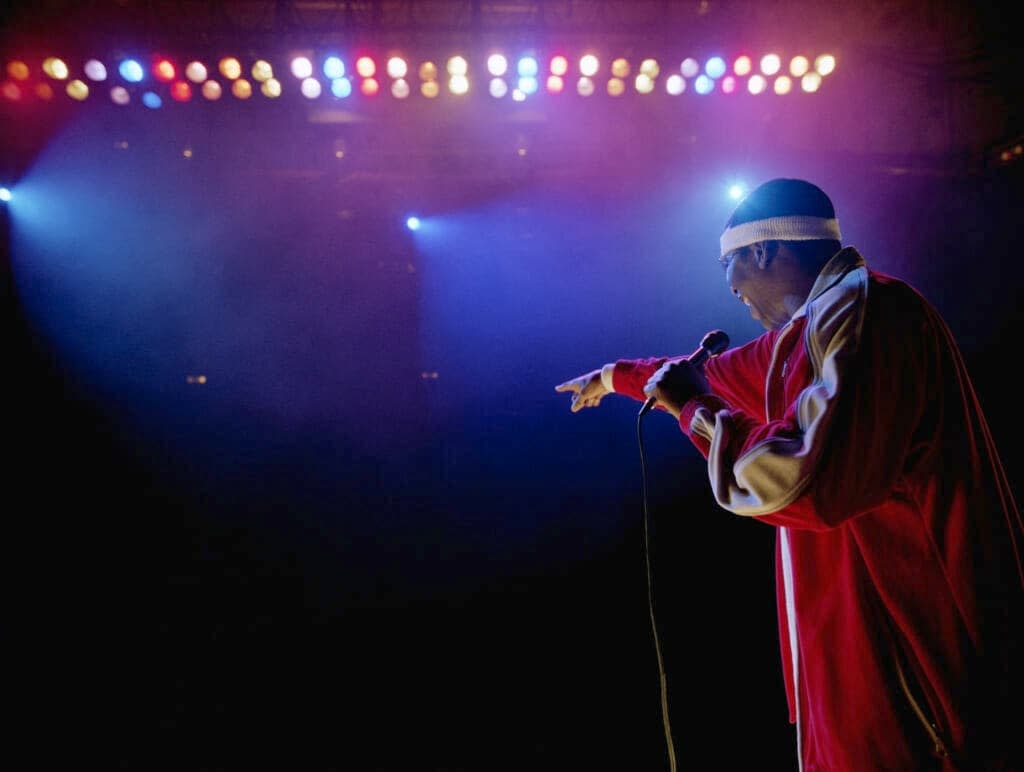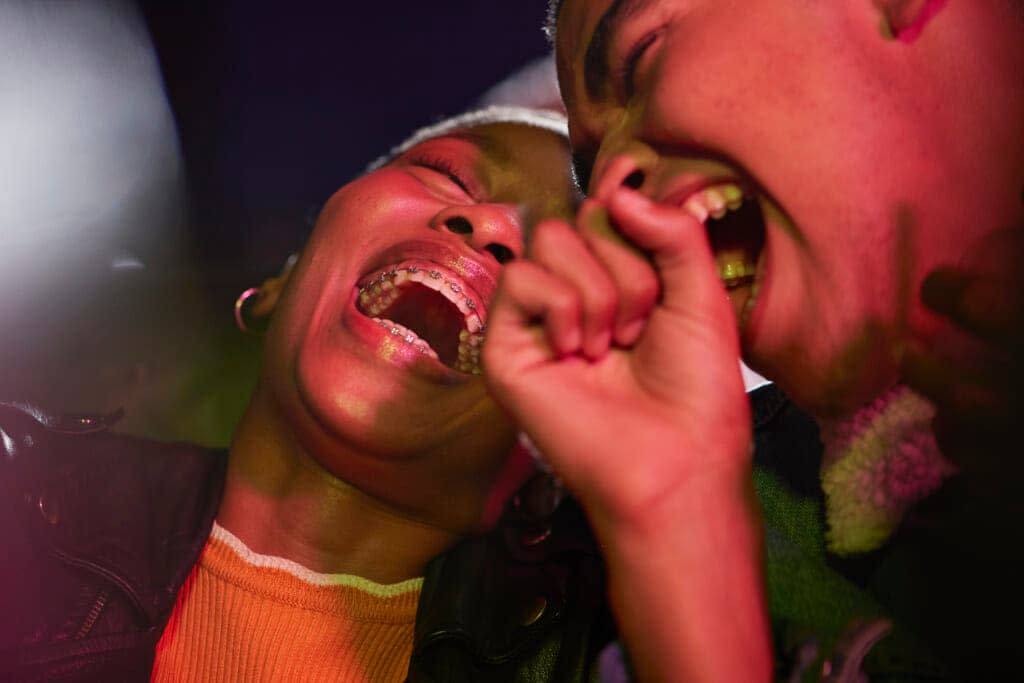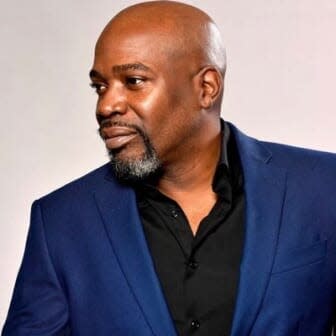All comedy is Black
OPINION: theGrio’s celebration of Black Comedy Month begins with the history of the Black artists who created modern comedy.
Editor’s note: The following article is an op-ed, and the views expressed are the author’s own. Read more opinions on theGrio.
“There is a reason why the greatest comedians in America tend to be Black.” — Chris Rock
Whether it is sadness, physical pain or psychological trauma, there is a reason why Black people have the ability to make anything funny. In his book Taking Laughter Seriously, philosopher John Morreall discussed three widely accepted theories on the psychological causes of laughter:
Superiority theory: Dating back to Plato and John Hobbes, the oldest theory goes that people laugh because they subconsciously believe they are superior to the thing or person at which they are laughing. This is why white supremacists with receding hairlines and advanced penis envy are hilarious.
Incongruity theory: “We live in an orderly world, where we have come to expect certain patterns among things,” Morreall writes. “We laugh when we experience something that doesn’t fit into these patterns.” Sally Hemings probably laughed her ass off when she heard comedian Thomas Jefferson’s best punchline: “All men are created equal.”
Relief theory: Laughter is a release of tension or a response to the passing of sadness, loss or danger. When white women endanger Black lives by weaponizing their privilege, referring to her as a “Karen” is only funny if the Black person survives.
Our spontaneously combustible senses of humor don’t just serve as a pressure release valve, a deflector shield and a coping mechanism. The African-American ability to summon smiles in the presence of sorrow is a pillar of the foundation of American culture that predates Black Twitter and white TikTok. It does not exist without us. Black people created the modern form of comedy. All of it.
We are the origin story.
To understand why this is a fact—not an opinion—one must first realize that the ability to make people laugh dates back to antiquity. From the first court jesters to the heralded buffoon known as BuBu D. Fool (who attempted to team up with Bennett, who, sadly, insisted that he “ain’t in it”), performers who made people laugh were valuable in every society. Katrina Dyonne Thompson notes that antebellum forced-labor camp owners often built stages for slave talent contests and shows (there were very few IMAX theaters before the Civil War). Not only did these enslaved entertainers “fetched a higher price on the auction block,” but the performances were also “a common form of amusement on the plantation.” The constitutionally secured chattel who didn’t smile and appear to enjoy the merriment were often beaten, creating the perception that slavery was an institution filled with grateful, happy-go-lucky workers who enjoyed being part of the international human-trafficking industry.
When the white minstrel entertainers popularized the first form of American theater, they didn’t create anything. The “father of American minstrelsy,” Thomas “Daddy” Rice, became the first minstrel superstar by simply putting on blackface and imitating a popular Black character that he had seen on the plantation shows:
Jim Crow.
After the Civil War, the minstrel shows declined because of the emergence of vaudeville shows. Featuring a mix of singing, dancing, acrobatics and live music, vaudeville performances were usually segregated. The artists—both Black and white—still performed in blackface and usually did a combination of singing, dancing and funny sketches…

Until one superior talent noticed the incongruity and provided some relief.
How a Black man invented stand-up comedy.
Most art forms are not invented. They are usually the result of the slow evolution of already existing genres. Hip-hop merged Caribbean dancehall, poetry and funk. Stepping came from African dance and call and response. The dozens were created when Black people gathered around a fire searching for an answer to how your mama got to be so old (it turns out, she used to babysit God). But Charlie Case invented stand-up comedy.
By himself.
All the parts.
Born August 27, 1858, in Lockport, N.Y., Charles Case was the son of an Irish mother and the first Black New Yorker to volunteer for the Civil War. His brief but unremarkable career as a $5 lawyer ended when he was kicked out of the profession and became a traveling salesman. During his travels, he spent time in bars making friends with vaudeville performers. When one of his acquaintances fell ill, Case and his showbiz buddies sponsored a fundraiser, and everyone demanded that he perform. A star was born.
Like most vaudeville acts, Case performed with a band and even sang a few original songs in blackface. Because of his light skin, everyone just assumed he was white. But on the Black circuit, it was an open secret that he was Black. Case’s performance style was totally different from the physical humor and slave caricatures of that era. “His sense of humor was sly and very natural, quick-paced, and somewhat distracted,” wrote Ramona S. Baker. “He spoke very quickly and slipped in small things here and there in a story that one was just trying to get the whole idea of, and just as the audience understood the story’s setup, he would throw in a small comedic thing, and give almost no time for the audience to laugh, he would just keep on going with the story.” By the 1880s, Case became the highest-paid blackface performer in America. Aside from the fact that every comedian in vaudeville was stealing his material, Case had a huge problem.
Case drank a lot.
If he lived today, he’d probably be diagnosed with social anxiety disorder-induced alcoholism, but in the mid-1800s, Case had “bad nerves,” which caused him to self-medicate with liquor. He wouldn’t go onstage drunk, so he quelled his anxiety by twiddling a thread between his fingers onstage. If he didn’t have his string, his nervous tic would cause him to clench his fist and swing his arms at the end of every joke. Sometimes, as a prank, his fellow showmen hid his string on purpose, just to see him punch wildly. But the vaudevillians imitating Case didn’t know how to describe the structure of his comic style of the man known to artists and audiences around the country as the “greatest master of the unexpected statement in the world” and the “funniest human being who ever broke into vaudeville.” So comic performers just began referring to the crescendo of a joke as a “Case punchline.”
Again, he invented stand-up comedy.
By the 1890s, the most famous performer on the Loews circuit “suffered from more pirates than anyone in show biz,” said vaudeville chronicler Joe Laurie Jr. “In fact, entertainers are still using his stuff on the radio and TV, but it’s not like it’s Charlie Case.” That’s when Case decided to stop performing on the vaudeville circuit. He loved the pay; he didn’t mind the theft of his material; he just hated wearing blackface. He didn’t just stop wearing blackface, he stopped singing, he stopped dancing and he stopped performing with musical acts. He just stood on stage and talked with one goal: to make people laugh.
No one knew what to call it. It wasn’t vaudeville. Some theaters billed him as a “monologuist,” while others referred to him as “the man who talks about his family.” He used no props or costumes. The act was so revolutionary that there wasn’t even a name for what he did.
“He stands in one place on the stage throughout his act,” wrote one astounded reviewer in 1909. “Once in a while, he moves his hands but never his feet. He meanders from story to story, each one funnier than its predecessor, and you are really wishing he would stop long enough for you to get your breath but he just keeps right on.”
Have I mentioned that Charlie Case invented stand-up comedy?
Case died in 1916, just before his talent agency decided to get into the brand-new film industry by forming Metro Goldwyn Mayer, now known as MGM. “Case’s untimely death was supposedly due to the accidental explosion of a gun that he was cleaning but it is generally recognized in the theatrical profession that he shot himself,” wrote music historian Sigmund Spaeth. “Mixed blood was the chief reason.”
In announcing his death, the reviewer for the New York Evening World said: “If all the minutes of joy he gave to the public could be added up it would cover hundreds of gladsome years.”
…Everything funny is Black.
To be fair, white people have also revolutionized modern comedy.
For instance, if you Google “First comedy album,” nearly every site will tell you that Mort Sahl’s The Future Lies Ahead, released on Verve Records, was the first modern comedy album. Sam n Henry, the first sitcom, was created by white actors. And a bunch of overly enthusiastic white people launched the first improvisational theater group in 1955. These events are tentpole moments in the history of comedy.
Well, they would be…If any of these so-called “facts” were true.
Long before the all-white Compass Players “revolutionized American comedy” by being recognized as the first improvisational theater troupe, Pat Chappelle’s Rabbit’s Foot Company toured the country as a traveling minstrel show. After the first season in 1900, Chappelle had essentially cornered the Black vaudeville market, employing 75 performers that traveled to 16 states. After he “accomplished what no other Negro has done…successfully run a Negro show without the help of a single white man,” Chappelle bought a baseball team that traveled with the Foots. But none of that compared to the biggest draw.
After noticing that the crowd response to the acrobats, singers, musicians and circus performers paled in comparison to his comedic actors, Chappelle decided to create a second tour that focused explicitly on comedy. And, to ensure the main show kept its audience, the comedic actors rotated between the two shows. Because they didn’t have scripts or pre-rehearsed routines, they interacted with the audiences and basically created a new show in every city.
And that’s why, in 1906, almost a half-century before the 1955 founding of the Compass Players, the Black-owned Funny Folks Comedy Company was actually America’s first improvisational theater troupe.
Google doesn’t know anything.
Take that 1958 “first” comedy album, for instance. In 1955, record label owner Dootsie Williams asked one of Malcolm X’s friends—a comedian named John Elroy Sandford—if Dootone records could record his act. The comedian wondered why anyone would pay to see him live if they could just buy a recording. The comic eventually relented when his brother, Fred Sanford Jr., told him it was a brilliant idea. But just to be sure, he should do some “special” material for the album. The result was Laff of the Party, which sold 250,000 units and made the comedian a household name in Black America. And since the material was created just for the album, it was also the first release of a live comedy special.
By 1958, when that white dude released The Future Lies Ahead, that comedian known as Redd Foxx had already released 14 live comedy albums on Black-owned Dootone Records.

Foxx and his Black contemporaries like Moms Mabley were selling millions of X-rated records for decades and saying whatever they wanted in soldout live shows before Lenny Bruce supposedly “used comedy to challenge free speech restrictions.” Not only did Black comedians like Flip Wilson and Dick Gregory use comedy as social commentary before George Carlin and Bruce, but when Carlin recorded AM & FM, the album that “marked Carlin’s metamorphosis from straight-laced to hippie, intentionally embracing the growing counterculture,” it was on Flip Wilson’s record label.
Yes, white people did lend a helping hand. The two white men who created Sam n Henry should be applauded for creating the first American sitcom that became Amos & Andy. Sure, they patterned all the characters after Black minstrel shows, pretended to be Black and used caricatures of Black people for a show that was technically a drama. But, for some reason, it’s called a situation comedy.
Maybe this is BuBu’s fault.
Every. Single. Thing.
Black comedy isn’t just the origin story of American laughter; it influenced American culture in several ways. Whether it is Dick Gregory airing the first national viewing of the Zapruder film or the fact that one of the highest-rated comedies of all time (Friends) is just a ripoff of a Black show (Living Single), Black comedy has been the constant in every niche of American culture.
Remember the Rabbit’s Foot Company? Well, one of the show’s performers showed up with a new wife at the beginning of the Foot’s 1904 tour. Gertrude Pridgett joined the tour with her husband as the comedy and dance duo The Black Face Song and Dance Comedians, Jubilee Singers [and] Cake Walkers. After her “vulgar and sexually frank” routine, “Madame Gertrude” would always sing one song as an encore, a sorrowful tune that was different from every other song in the main show that made the audience go wild. When anyone asked her about that kind of music, she told them she just called it “the blues.” By the time the music was popularized, Madame Gertrude had adopted her husband’s last name and was a superstar known as “Ma Rainey.”
That’s right, the woman who is remembered as the “Mother of the Blues” honed her skills as a comedian. And since jazz, rock and hip-hop evolved from the blues alongside Black comedy, it could be argued that Black comedy has influenced American music more than actual white musicians.
Once, while I was sitting with the late comedian Tyler Craig, he elaborated on Chris Rock’s premise that opens this story, explaining why Black comedy is simply better. “When I perform in front of white people, I only have to be amusing. They paid for a few laughs in a world that makes them smile every day, so they want you to be funny,” Craig explained. “But Black audiences are like: ‘this motherf***er better make me laugh’ because they live in a world that gives them something to cry about every day. And that’s the difference.”
“White folks wanna laugh,” he said before adding:
“Black folks need to laugh.”
Thank you for coming out.
Good night, God bless.

Michael Harriot is a writer, cultural critic and championship-level Spades player. His book, Black AF History: The Unwhitewashed Story of America, will be released in 2022.
TheGrio is FREE on your TV via Apple TV, Amazon Fire, Roku, and Android TV. Please download theGrio mobile apps today!
The post All comedy is Black appeared first on TheGrio.
